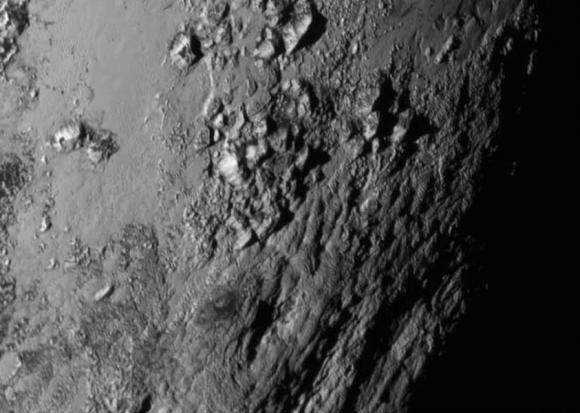PROVIDENCE, R.I. [Brown University] — Fifty years ago today, in 1965, I was working in the field in a remote part of West Virginia, studying ancient limestones as a graduate student in the Department of Geological Sciences at Brown University. I was interested in the Earth and its history but didn’t really think much at all about the planets, which were astronomical objects at that time.
Fascinated by the prospect of the first ever flyby of another planet by Mariner 4, I came out of the field early, went to a local motel with a TV, and watched with eager anticipation as closeups of the fabled and mysterious planet Mars came beaming down. Was there life on Mars, as many thought? Would there be evidence of a changing climate and vegetation? What would it look like? And how could we possibly have gotten there to take these pictures?

The Louis and Elizabeth Scherck Distinguished Professor of Geological Sciences
When the few images were beamed down as the spacecraft sped past the planet, they revealed a heavily cratered and lifeless Moon-like surface. There was palpable disappointment on the part of the television reporters, who resorted to a discussion of what the scientists were going to name these craters.
For me, however, the fire had been lit. What did the rest of Mars look like? If there was no life, why not? What does the geology of other planets look like? How can this tell us about the missing formative years of our own planet’s history?
In the ensuing years, inspired by Brown Professor Tim Mutch and many others, I passionately pursued these questions, working on NASA and international missions to Mercury, Venus, the Moon, Mars, asteroids, comets, and the outer planets and satellites. During this time, these astronomical objects rapidly became geological objects, as we explored the Moon with astronauts, returned rock and soil samples, and analyzed the surface of other bodies with probes and rovers.
And now, 50 years to the day, we see the first images of the surfaces of most distant Pluto and its moons. Amazing! And of course, they are not at all what we expected, which is indeed, why we explore the unknown in the first place.
We have completed the reconnaissance of the Solar System, and it is now our neighborhood. We are currently engaged in vigorous international exploration of this neighborhood, with recent or ongoing missions to the Mercury, Venus, the Moon, Mars, asteroids, comets, the outer solar system, and now even beyond Pluto, the Kuiper belt.
But what of the new neighborhoods? When I came out of the field in West Virginia 50 years ago, our Sun was thought to be unique as a star in having orbiting planets. We now know that planetary systems are more the rule, not the exception. Just last week we discovered a Mars-sized planet around another star, far, far away.
What an amazing time to be alive! I think back to the exploration of the “New World” in the last millennium and realize that this took many centuries, with most individuals who lived during this time not even aware that it was happening.
Who would have thought that we would live in an era in which we explored all of the planets and more in less than a century — indeed in a lifetime, let alone my lifetime. And everyone on the planet shared every step!
Imagine what the next 50 years have in store!”

